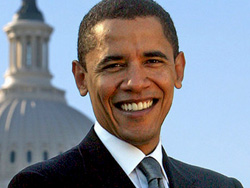Washington, Feb 7: A US Congress-established commission on international religious freedom has commended President Barack Obama for deepening relations with India while recognising religious freedom concerns during his trip to the country.
"President Obama's timely comments underscore the importance of India getting religious freedom right," said Katrina Lantos Swett, Chairwoman of the US Commission for International Religious Freedom (USCIRF).
Notably, members of the USCIRF were denied visa by the previous UPA regime to send a fact-finding mission to India to access religious freedom in the country in particular states like Orissa and Gujarat.
In its annual report, USCIRF has been highly critical of the status of religious freedom in India and has often compared it at par with some of the authoritarian regimes.
Since 2009, USCIRF designated India as a Tier 2 country. USCIRF, in a statement, said religious freedom is a challenge that India must and can address, given its diversity and long history of democratic values.
"India's history includes both Article 25 of its Constitution –- which provides for freedom of conscience and the free profession, practice, and propagation of religion -- and its international commitments," Swett said.
"India can meet this challenge by protecting religious minorities and holding accountable the perpetrators of religiously-motivated harassment, intimidation and violence," concluded Swett.
USCIRF said it commends Obama for deepening relations with India while also recognising religious freedom concerns during his three-day trip to the country in late January, concerns he reiterated at the February 5 National Prayer Breakfast. The President highlighted how India's success is dependent on not being "splintered along the lines of religious faith".
At the National Prayer Breakfast, Obama said, "in past years, religious faiths of all types have, on occasion, been targeted by other peoples of faith, simply due to their heritage and their beliefs -- acts of intolerance that would have shocked Gandhiji, the person who helped to liberate that nation."
USCIRF said Obama's concerns come at a time of increasing abuses against India's minority religious communities. "India is one of the United States' most important partners,"Swett said.
"It is the world's largest democracy with nearly 1.22 billion people, a deeply pluralistic society, and the birthplace of numerous religions. This society includes the world's third-largest Muslim population and a Christian population larger than several European countries. Our two nations share many values and upholding religious freedom must be one of them," Swett said.






Comments
Add new comment